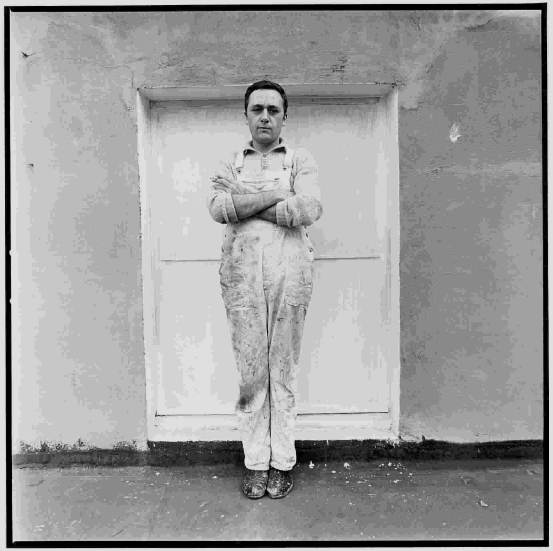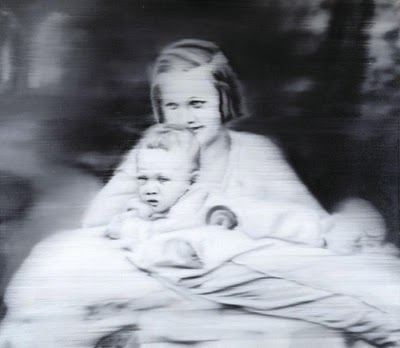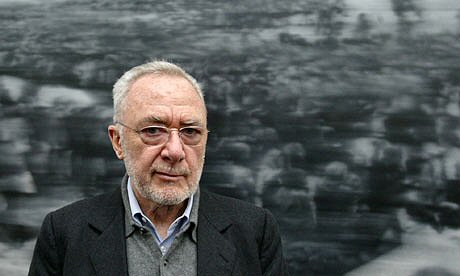|
La Chambre Des Reines
|
Paintings
|
Gerhard Richter 1932
"Now there are no priests or
philosophers left,
Life Gerhard Richter was born in Dresden, Germany, in 1932. He grew up in the countryside, in Reichenau and Waltersdorf in Saxony's Oberlausitz, which is Poland nowadays. His mother was the daughter of a concert pianist. She encouraged her son's artistic interests. His father was a local school teacher and a member of the NSDAP who lost his job after the war (in which he had served).Gerhard lived his first thirteen years under National Socialism. He had been a young boy in Dresden when it was bombed by the Allies in 1945. Two of his uncles died in action, his mentally disabled aunt was killed as part of the Nazi euthanasia program, also known as Action T4. After the war, Gerhard lived for sixteen years under East German Communism. In 1948 he left school after tenth grade with a certificate of graduation. In 1950, he applied to Dresden Art Academy but was rejected. In 1952, he reapplied and was accepted to the "free painting" class. He studied there for four years, during the final year in the mural painting class. In 1955, Richter had the chance to tour West Germany and to travel for a week to Paris. In 1957, Richter married Marianne (Ema) Eufinger. They traveled to West Germany on their honeymoon. Ema was the daughter of Heinrich Eufinger, the SS doctor responsible for carrying out the sterilisation of the mentally ill and for implementing the euthanasia program. He also managed the mental institution where his Aunt Marianne was "euthanised" in 1945. Richter, without realising it, had married into a family deeply implicated in the killing of his beloved aunt.
Tante Marianne, 1965, overpainted photograph - oil on canvas.
In 1959 Richter obtained the permission to visit the Documenta(2) exhibition at Kassel in West Germany where he discovered Abstract Expressionism and Art Informel. In 1961 he and his wife fled to West Germany and settled down in Düsseldorf, where he was accepted at the art academy and studied for 2 years. He started a photo album of his early works. His first solo exhibition was held in Düsseldorf in 1963. It was the first presentation of his photo-based painting style. Richter blurred the paintings, modernising traditional art through technique, and using photography as his source of material. A few years later he became a visiting professor at the Academy of Fine Arts in Hamburg and was awarded the art prize Junger Westen. In the late sixties he painted townscapes, landscapes and shadow paintings. He also began to assemble pieces for Atlas, an ongoing compilation of photographs, clippings and sketches. In 1969 he produced the first of a group of grey monochromes that consist exclusively of the textures resulting from different methods of paint application. Richter began to use glass in his work in 1967. In 1981, for a two-person show with Georg Baselitz in Düsseldorf, Richter produced the first of the monumental transparent mirrors that appear thereafter in his oeuvre. For more information see next page under "Glass/Mirrors" In 1972 Richter was chosen to represent Germany at the Venice Biennale, a major contemporary art exhibition that takes place once every two years (in odd years) in Venice, Italy. That same year, he exhibited at Documenta in Kassel, where he showed again in 1977, 1982 and 1987. At Documenta in 1982 Richter was awarded the Arnold Bode Prize and in 1985 in Vienna the Oskar Kokoschka Prize.
Richter's first exhibition in the U.S. took place at the Reinhard Onnasch Gallery in New York in 1973. Fifteen years later in 1988 he was given his first North American retrospective organised by the Art Gallery of Ontario, Toronto and The Museum of Contemporary Art, Chicago. In 1983, he moved from Düsseldorf to Cologne. The following year, he began to work again in watercolours, which he had stopped in 1978. Since the late 1980s, his work has oscillated between photo-based pictures and abstractions. In 2007, Richter's stained glass in the Cologne Cathedral was unveiled, a 113 square meter abstract collage of 11,500 pixel like squares in 72 colours, randomly arranged by computer (with some symmetry), reminiscent of his 1974 painting 4096 colours. For further information see next page under "Stained Window Cologne Cathedral".
Gerhard Richter is one of the most important, influential and top selling artists of the post-war era. For decades he has sought innovative ways to make painting more relevant, often through a multifaceted dialogue with photography. Nine years, after Richter married Marianne Eufinger, she gave birth to his first daughter Betty (1966). He married his second wife, the sculptor Isa Genzken, in 1982 . Richter had his son, Moritz, with his third wife Sabine Moritz the year they were married, 1995. One year later, his second daughter, Ella Maria, was born. The family lives in Cologne. Though Richter has been known in the United States for quite some time, the highly successful retrospective of his work at the MoMA in 2002 catapulted him to unprecedented fame. Sources: Gerhard Richter.com, Lenin Imports
You find Gerhard Richter's work at: The Galerie Neue Meister at Dresden - Germany Atlas is on exhibit at:
For Gerhard Richter's own website and complete biography: click here
|



